-
Car Reviews
- All reviews
- Midsize SUVs
- Small cars
- Utes
- Small SUVs
- Large SUVs
- Large cars
- Sports SUVs
- Sports cars
- Vans
Latest reviews
- Car News
-
Car Comparisons
Latest comparisons
- Chasing Deals
Facelifted Range Rover Velar welcomes new Autobiography range-topping variant – and while plenty luxurious, it’s missing a few critical things
So the time has come. After much grift, you’ve gotten yourself into a highly salaried role, got your business into a great place, or perhaps merely a rich uncle has dearly departed, leaving you a great sum.
Whatever the situation, it’s time to think about your Autobiography – the car, we mean, not the book.
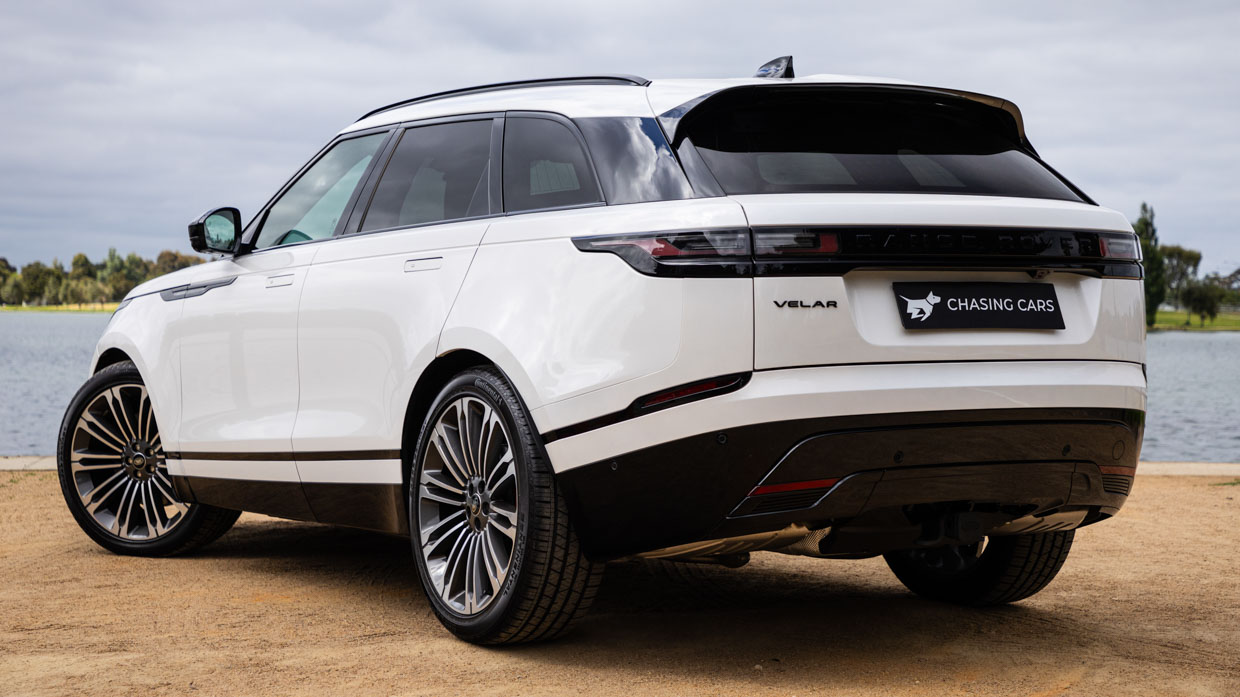
In Range Rover lingo, Autobiography means extra-posh. And it’s now never been cheaper to get yourself into one.
That’s thanks to the new, model year 2024 Velar. The Velar first appeared in 2017 as the somewhat segment straddling medium-to-large sized SUV in Range Rover’s line-up – plugging a gap between the baby Evoke and larger Sport.
The facelifted Velar gets redesigned head- and tail-lights, a new lower rear bumper, modernised interior while the Autobiography is added to the Velar line-up for the very first time. At $156,370 before on-road costs, it’s also the most expensive a Velar has been.
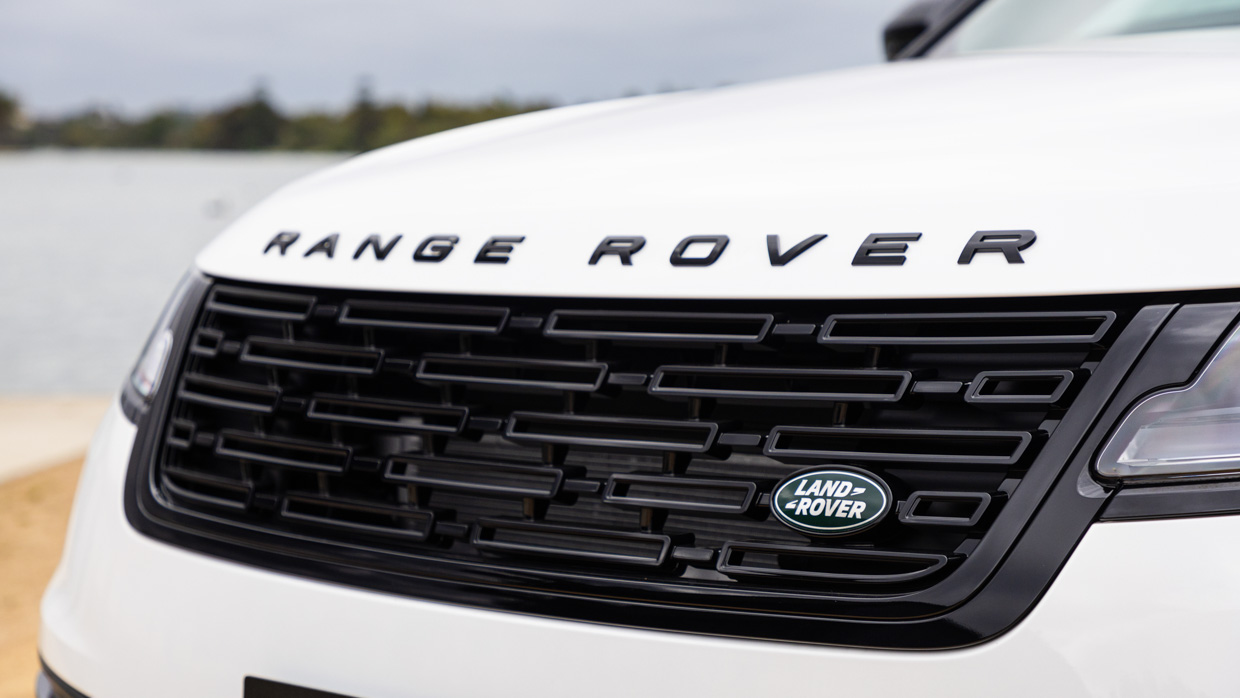
In addition to the physical changes, Range Rover has consolidated the Australian Velar line-up to three model grades – the newly base Dynamic SE, the mid-spec Dynamic HSE and halo Autobiography we’re driving today.
Four powertrain options comprise a 2.0-litre petrol turbo four-cylinder (badged P250), a turbodiesel 3.0-litre straight-six (D300), a plug-in hybrid petrol turbo four-cylinder (P400e) and a turbocharged petrol straight-six (P400).
The Autobiography can only be had with the latter 294kW/550Nm option – not that that’s anything to complain to the dealer about, as this is the most desirable-sounding powertrain of the lot.
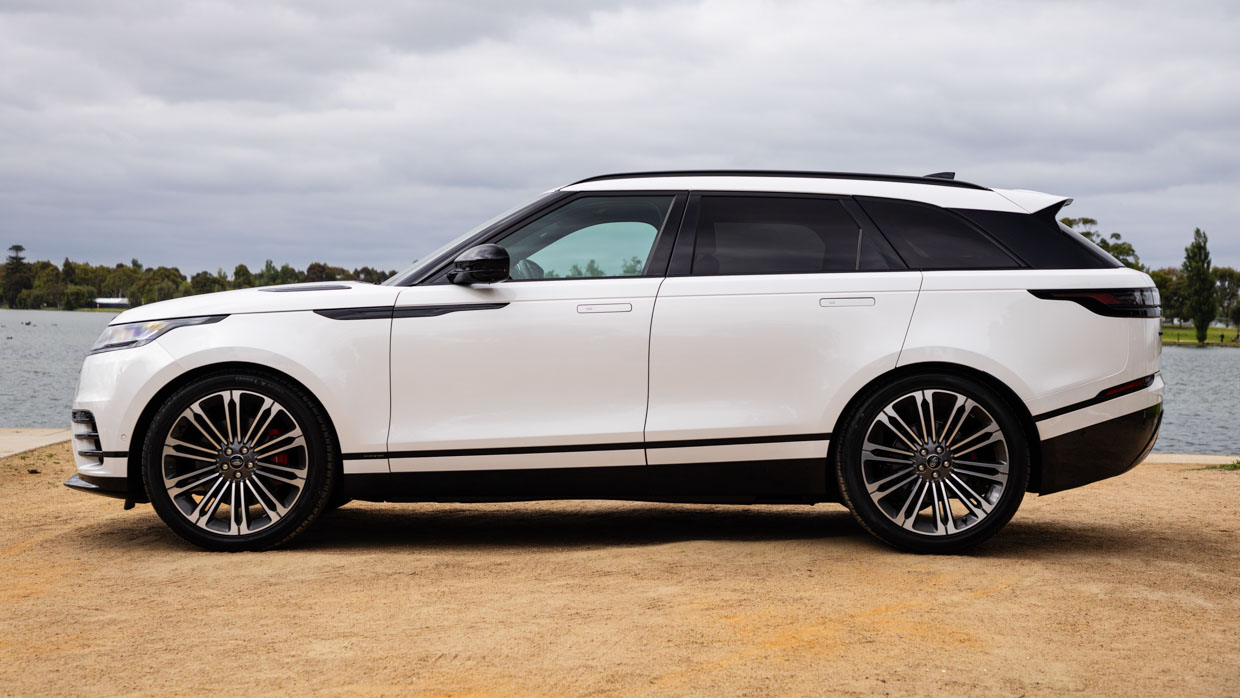
Until Aston Martin and Bentley inevitably offer mid-size SUVs, the Velar Autobiography’s closest rivals are the $126,920 Jaguar F-Pace 400 Sport (which shares the same platform, outputs and general luxe philosophy).
Also in this pack is the $117,500, 280kW/520Nm Porsche Macan S, although it probably errs more towards the sporty than luxury end of the spectrum – and is imminently to be replaced by an all-electric model.
The latest luxury mid-size SUVs from the German brands are also now challenging Range Rover for outright opulence.
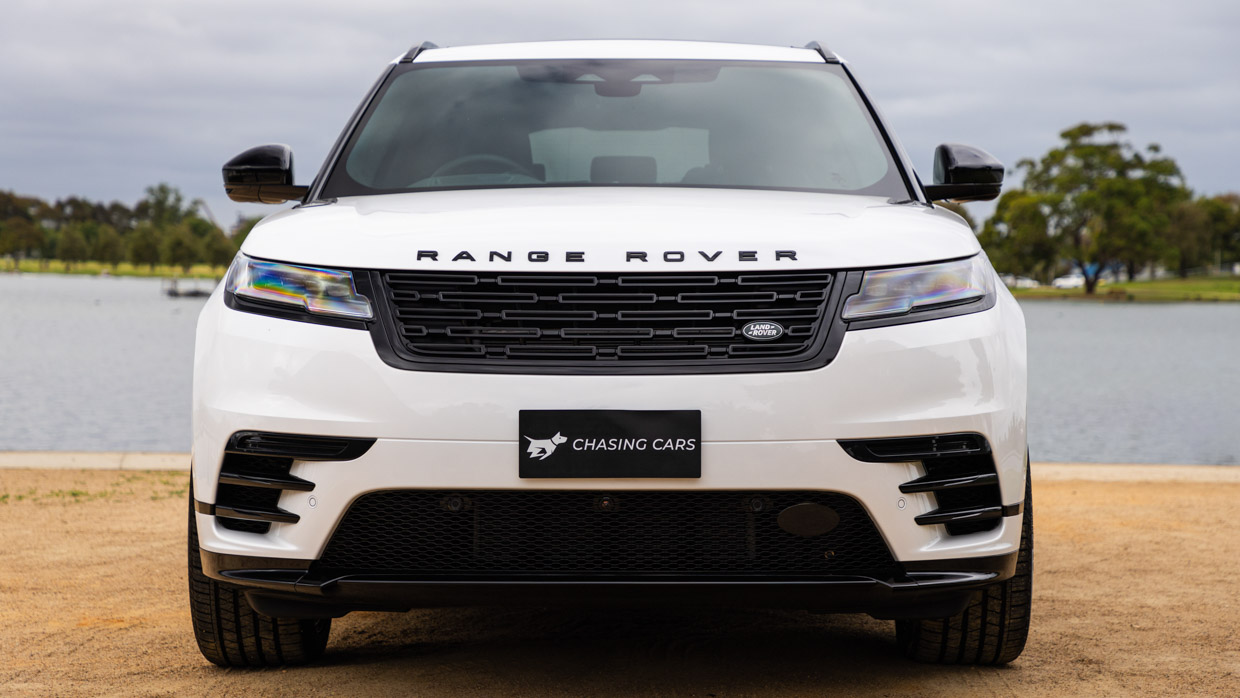
On that list we’d include the 251kW/700Nm, $119,700 Audi SQ5; along with the slightly larger $149,900, 360kW/700Nm BMW X5 50e M Sport; the $124,675, 273kW/551Nm Lexus RX 500h F Sport; and the $159,900, 270kW/500Nm Mercedes-Benz GLE 450 Coupe – most of them notably cheaper than the Velar Autobiography, you might have observed.
Get a Velar of any sort and you’re guaranteed a bit of exclusivity, although perhaps unintentionally on Range Rover’s part. Just 514 Velars were sold in Australia last year, far below the 4434 units that made the BMW X3/X4 Australia’s best-selling luxury mid-size SUV in 2023.
One of the Velar’s major features is, of course, its styling. Designed by Gerry McGovern, the Velar, despite now a seven-year-old design, has aged well – a beautiful vehicle with perfect proportions.
While the new Autobiography is a bit anonymous from the front – especially in the Ostuni Pearl White of our test car – it’s a car that gets better the longer you look at it.
The statement-making 22.0-inch wheels sit proudly at each corner, while we love its high waistline and the way it tapers at the rear, like if it kept going, all its lines would eventually and elegantly converge into one.
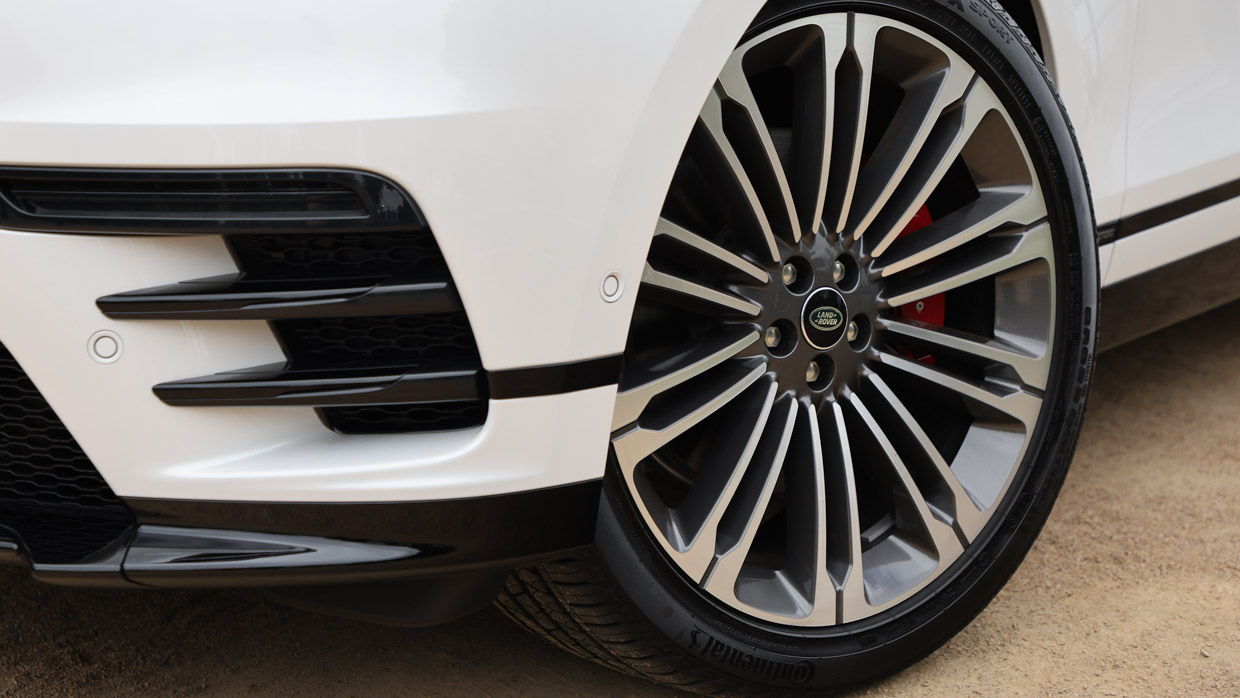
Priced from $156,370 before on-road costs, as the range-topping grade the Velar Autobiography comes with a long list of standard equipment – although some things that really should be standard are cost-options.
Standard equipment highlights include:
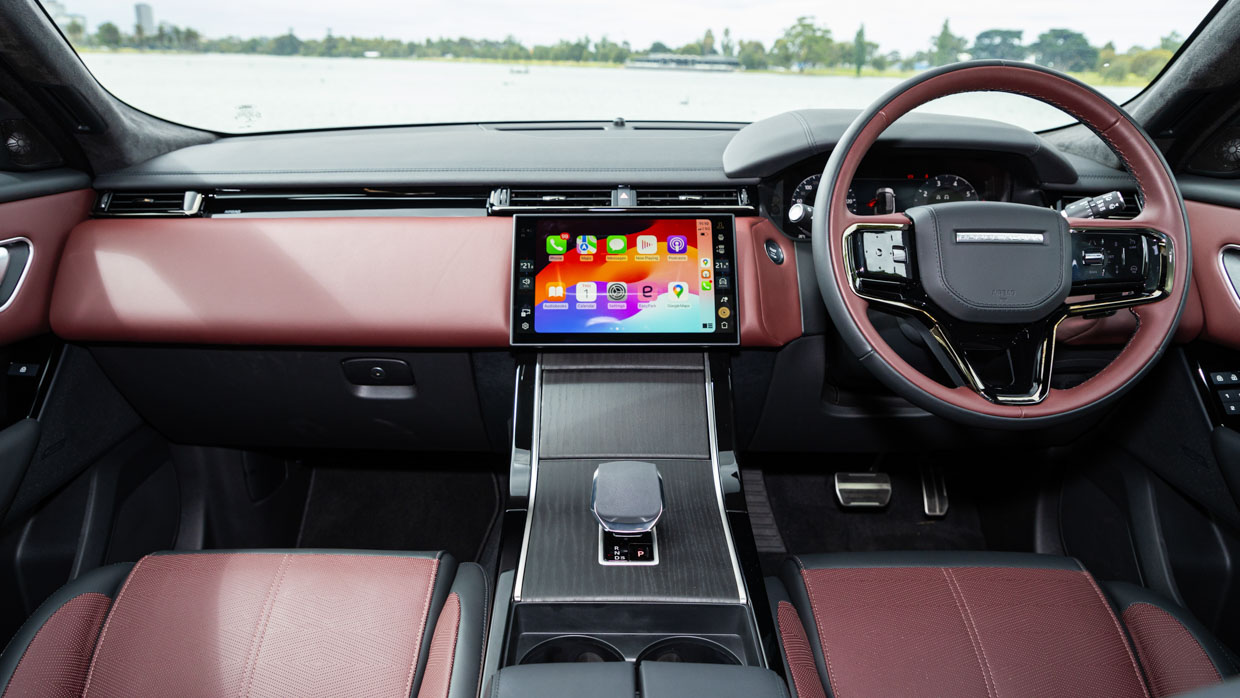
Some of the options are a bit rich. To be able to mix and match powertrain, steering and suspension modes requires the $940 Configurable Dynamics option; front fog lights are $403; boot-situated, remote rear-seat lowering levers are $300; and the only way to get a heated steering wheel is part of a $1816 Cold Climate Pack.
All things that should probably be standard on such a pricey, range-topping vehicle.
With $9440 of options, our test car cost $165,810 before on-roads – just about overlapping with the $172,850, 294kW/550Nm Range Rover Sport P400 Dynamic HSE (larger, but slower and with less equipment).
Even by SUV standards you sit surprisingly high in the Velar, looking down on Mazda CX-5s and Toyota RAV4s driven by the great unwashed (whose errant odours are filtered by the cabin air purification). You’re almost at eye-level with a typical dual-cab ute. Outward visibility is okay, but the A-pillar is pretty chunky.
While “mid-size” makes you think of a manageably-sized SUV, at 4797mm long, 2041mm wide and 1678mm high – and with a 2874mm wheelbase – the Velar is still quite a large car, a feeling that never fully goes away. Any longer and you’d want it to have rear-wheel-steering.
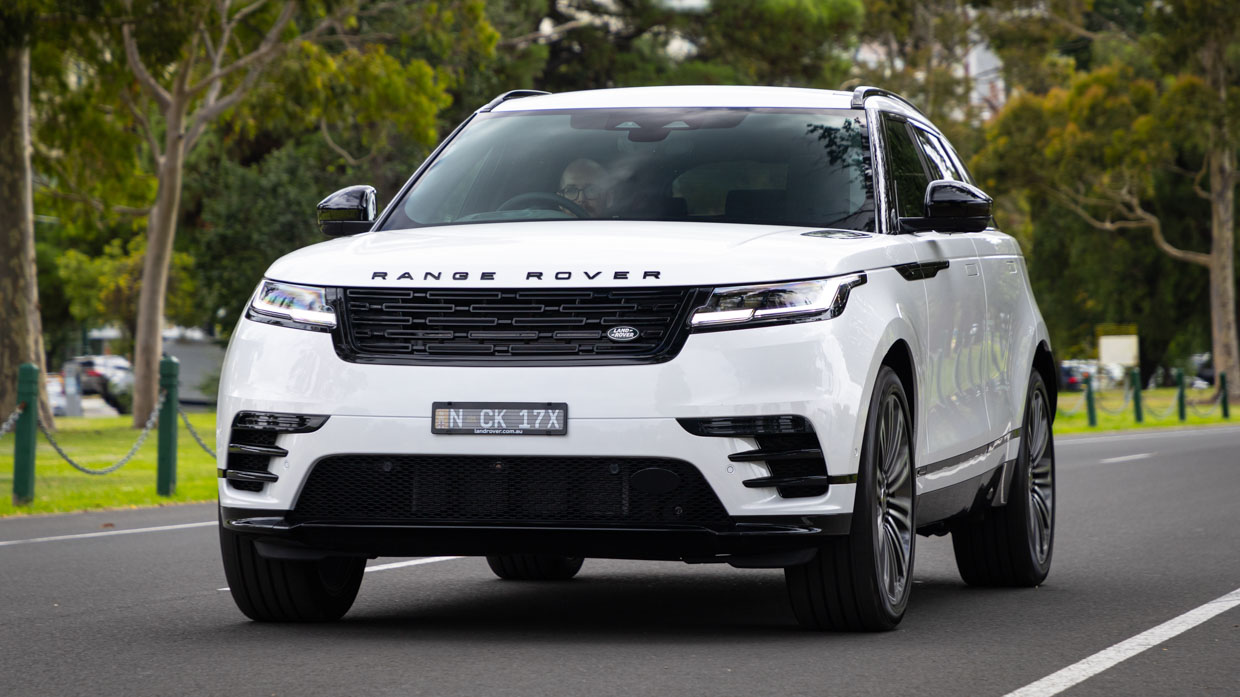
Starting the Autobiography and ambling about at low speeds, the straight-six is easily heard in the cabin, but not in an unwelcome way – it sounds good, meaty and muscular.
At urban speeds, the Velar offers effortless motoring with lovely, light steering and plush air suspended ride quality that – while not wafting – absorbs the vast majority of road imperfections. It wasn’t until we swapped into a conventionally steel-sprung Velar Dynamic HSE that we appreciated how good the Autobiography’s air suspension was.
When it comes to acceleration, curiously, the Autobiography is not the fastest model in the 24MY Velar line-up – that title goes to the plug-in hybrid P400e models, whose 221kW turbocharged inline-four and 105kW electric motor combine for a hearty 297kW/640Nm – the same power as the six-cylinder Autobiography, but nearly 100Nm more torque.
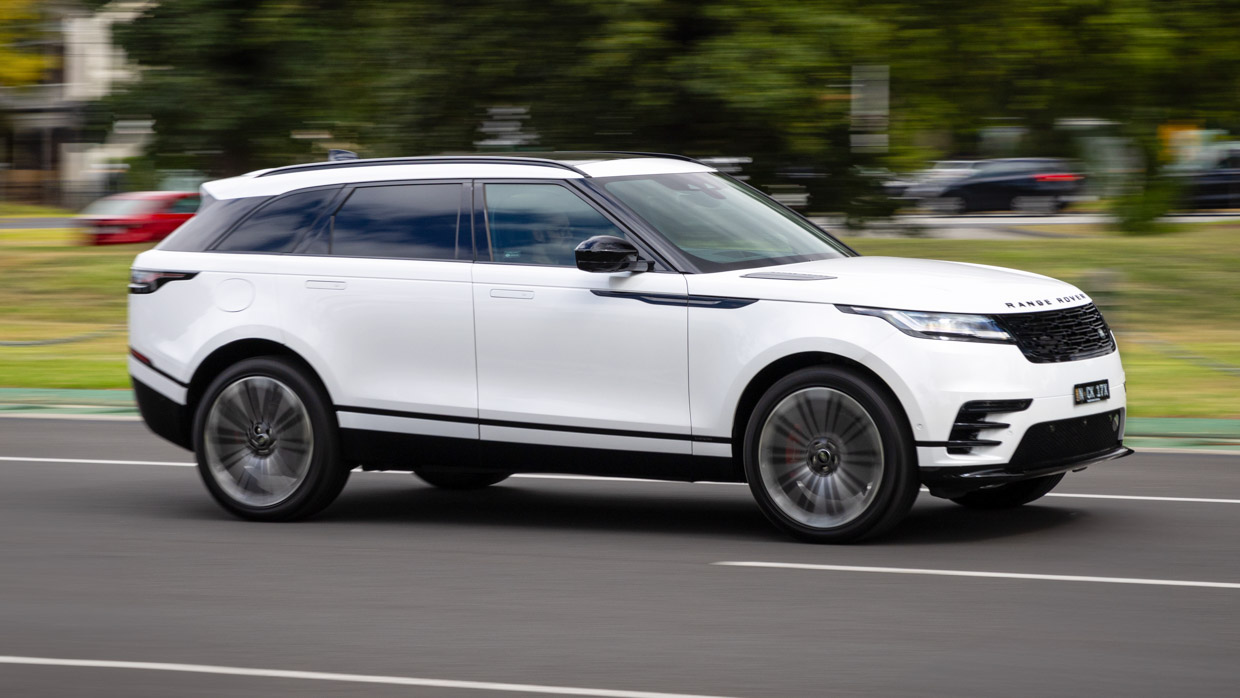
While the P400e weighs about 195kg more, it pips the Autobiography from 0-100km/h by 0.1sec – 5.4sec versus 5.5. The P400e we drove after the Autobiography felt unexpectedly brisk.
That’s not to say the Autobiography is slow. Put your foot down and the turbocharged Velar squats over its softly rear axle and angrily belts towards its 6500rpm redline, shifting into new gears with impressive crispness.
There’s 280km/h at the top of the speedometer although that’s partly a fib, as the Velar Autobiography is limited to 250km/h – not that that matters much on Aussie roads. (Curiously, coil-sprung Velars are limited to 210km/h.)
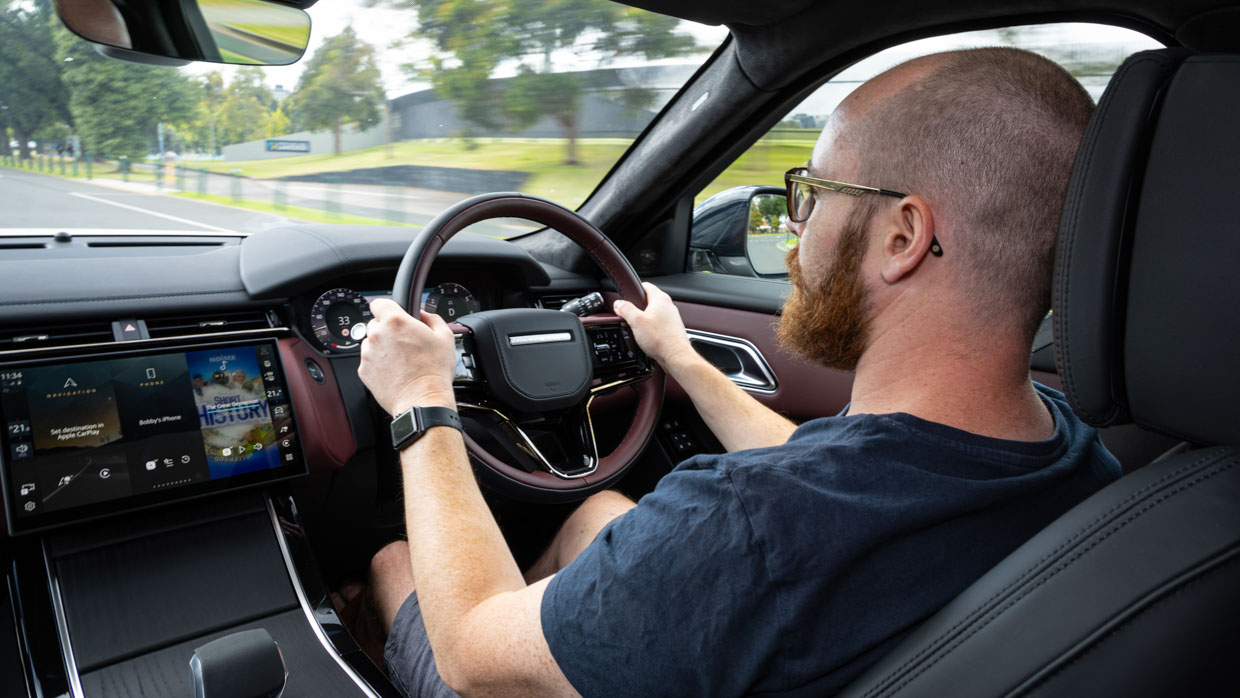
Find some corners and the Velar – rear-drive until traction requires engaging the front axle – is about managing the softness within the suspension.
Quite a tall vehicle, even with the air suspension set to its firmest mode, the tall Velar dives, squats and rolls notably, although fluidly, in an enjoyable, engaging way.
Ultimately, though, the 265mm-wide Continental Cross Contact LX tyres can only do so much with 2010kg – and that’s despite the Velar’s mostly aluminium architecture.
To assist with road noise, for the updated model, Range Rover added active noise cancellation – now reducing overall vehicle noise by a claimed 4dB – although without the ability to turn it off, it’s hard to know how much of a difference it makes. The Velar Autobiography is a pleasingly quiet car most of the time.
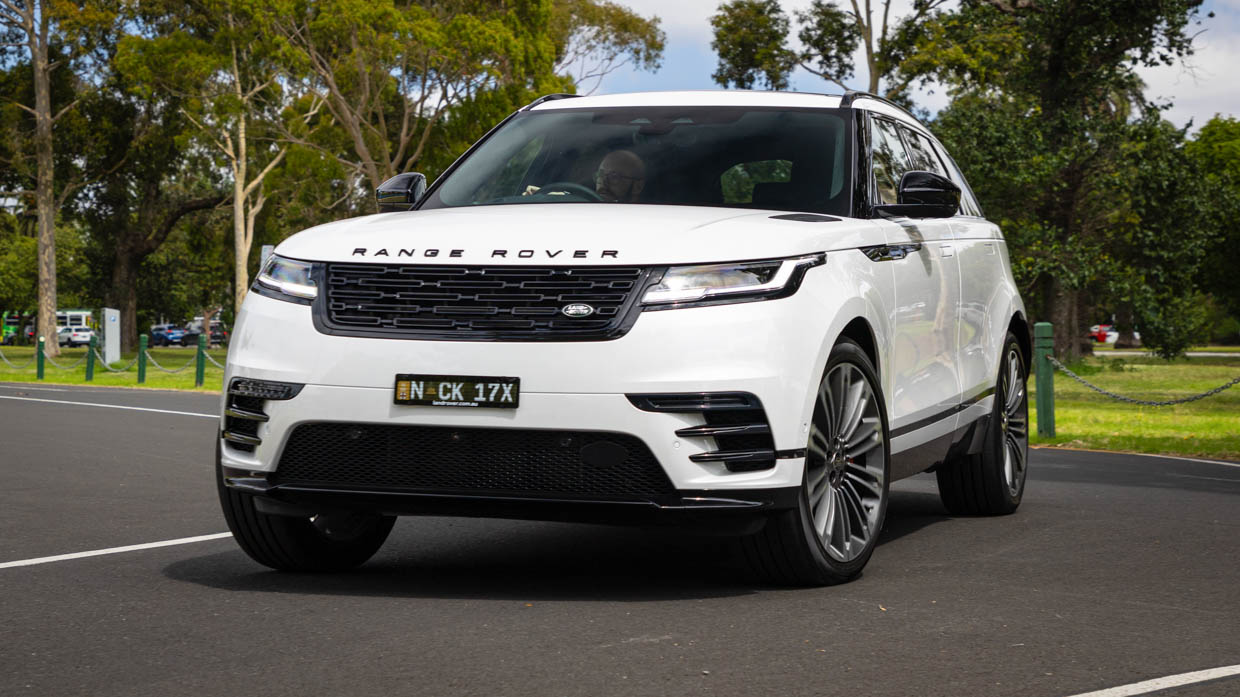
We didn’t get to take the Velar off-road – most would think twice with one glance of those 22-inch wheels – but there are plenty of features for those who might like to.
There are modes for Grass/Gravel/Snow, Mud Ruts and Sand, while the air suspension offers a raised, Off-Road mode for added clearance. There’s also depth sensing for wading.
Tech-heads will be disappointed with the Velar’s advanced driver assistance system (ADAS) which is only a basic set-up.
While it has lane-keeping, the Velar lacks hands-off ability using cruise control on a motorway. These kinds of systems can dramatically reduce fatigue during long motorway stretches and are widely available on much cheaper models from non-premium brands.
Unlock the Velar and the flush door handles electrically pop out, and as you open the driver’s door, there’s a strong smell of fine, high quality leather like you’ve just wandered into a Gucci store.
With relatively small windows, our test car’s Deep Garnet/Ebony black and burgundy interior with black suede headlining – unique to Autobiography – make for quite a dark, cave-like interior, even during the day. If not for the panoramic sunroof, it would be like peering out of a cave into the sunlight.
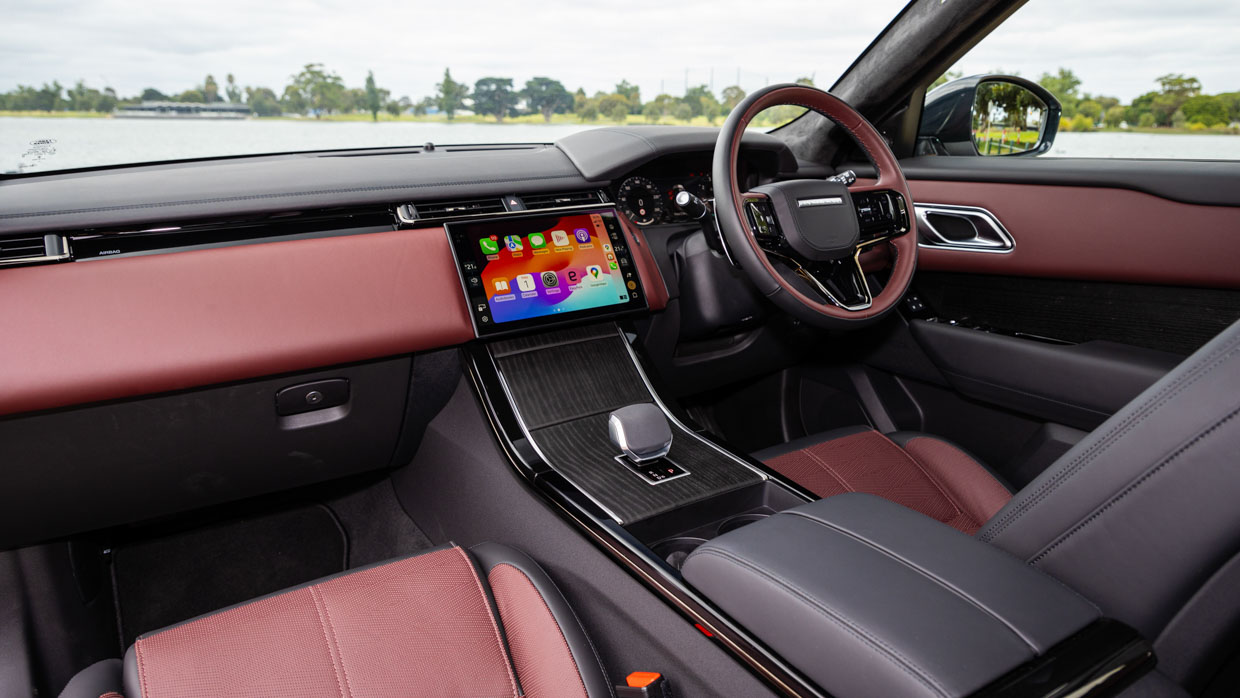
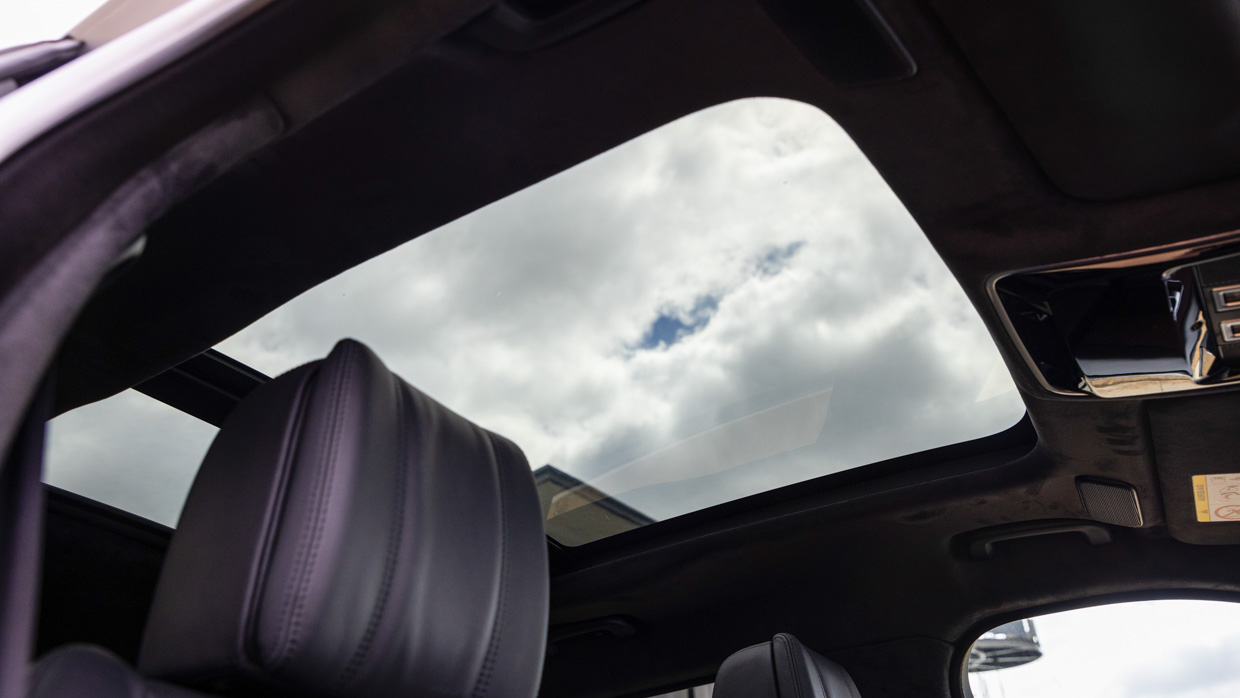
There’s plenty of space in the front row, elbow space especially – this is not a vehicle in which you’ll be rubbing shoulders with your front passenger.
As part of the facelift, Range Rover added a bit of brightwork in the form of tinted chrome on the steering wheel and around the central air-vents – which increases the sense of style and class. We also quite like the metal gear shift paddles behind the steering wheel, which feel solid and chink satisfyingly under your fingernails.
One of the biggest changes for the 2024 model year Velar is the centre stack, where Range Rover has consolidated the two former middle screens into one – including, controversially, replacing all dedicated heating and cooling hard buttons and dials with a menu in the new, central 11.4-inch touchscreen. The physical volume dial is also gone.
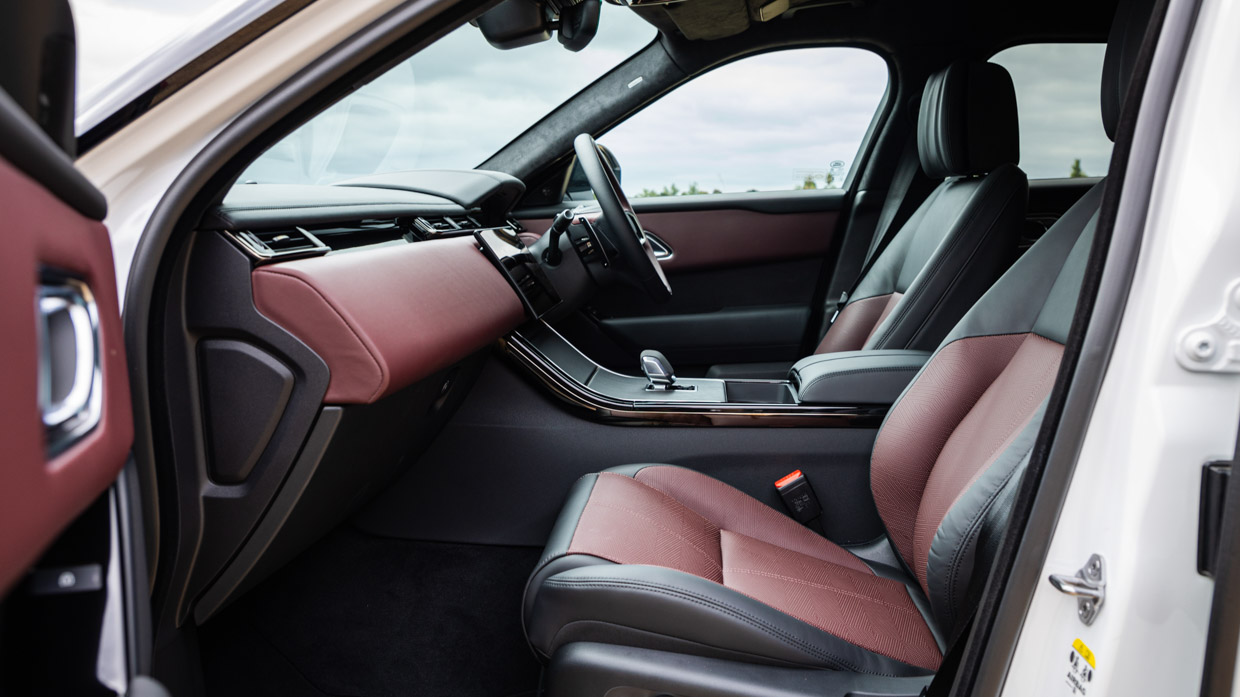
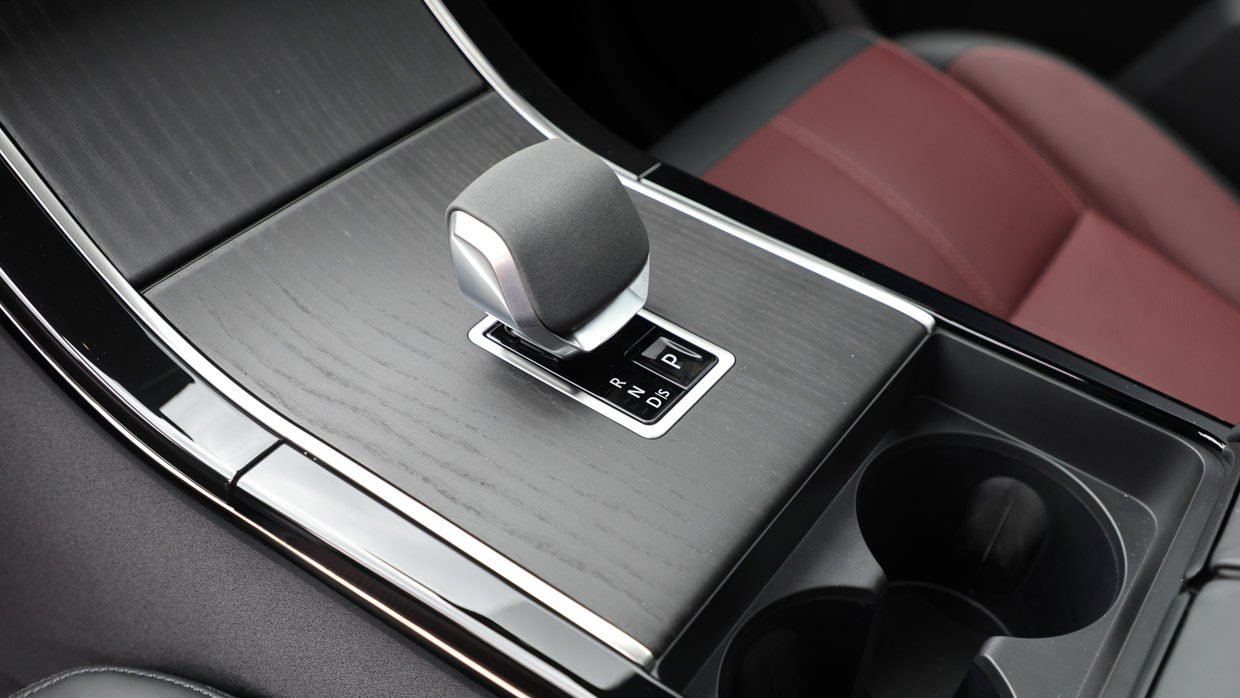
An irritating functional faux-pas committed by many other manufacturers to reduce production costs, luckily the updated Pivi Pro has one of the more intuitive interfaces, especially for adjusting the heating and cooling.
The buttons, text and icons are clear and large, and to change the temperature you just drag a slider up and down. In fact, the Pivi Pro’s heating and cooling adjustment is so easy, for a change we didn’t miss hard-button controls and dials.
The back seat has sufficient space for adults – it’s a bit tighter than we hoped – and there’s quad-zone air-conditioning. There are two sets of outboard ISOFIX points and three top tethers.
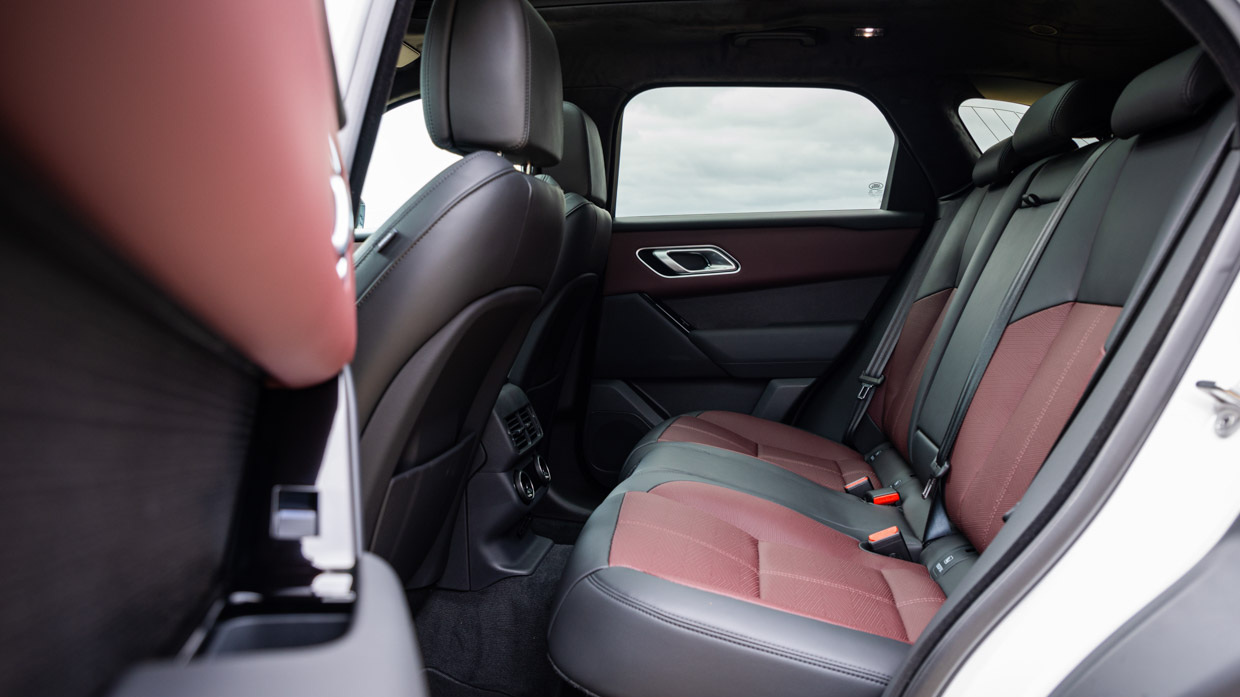
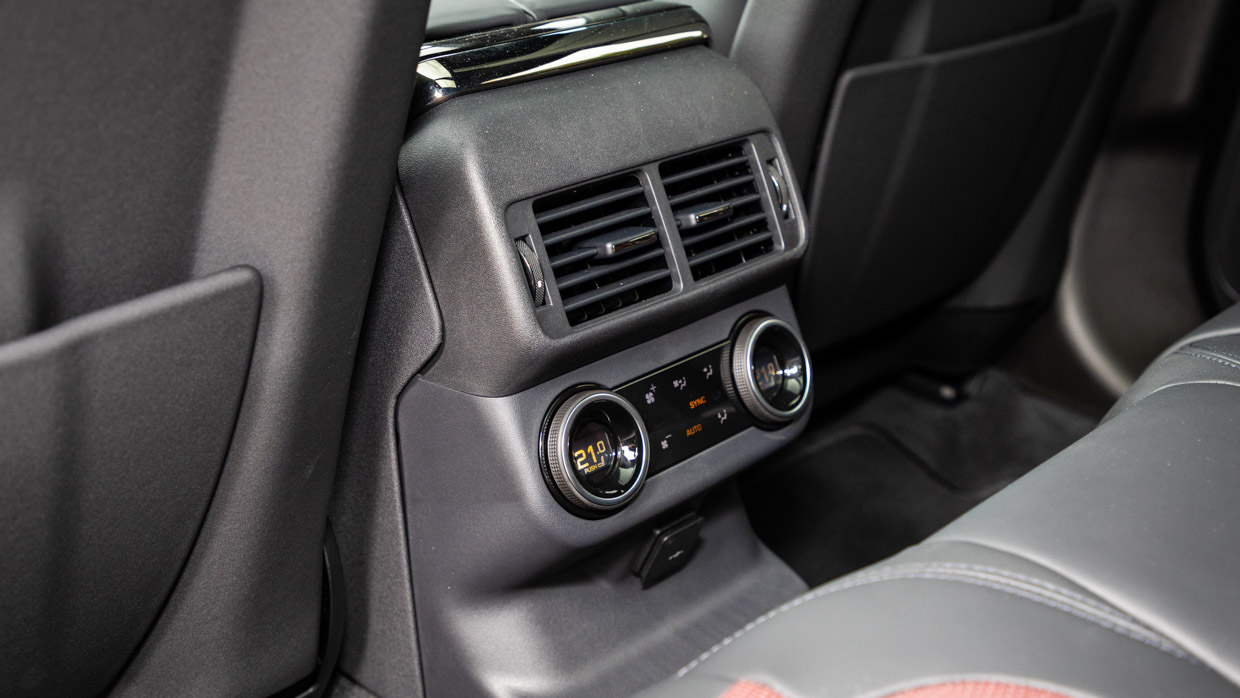
The boot is nice and big – 735 litres floor-to-ceiling – and 40/20/40 split-fold rear seats increase practicality. Two boot-situated buttons can raise and lower the height of the rear air suspension, helpful for fitting a trailer to a tow hitch – or lifting something heavy into the boot.
This is only available on the optional tow assist pack. The official braked rating is 2500kg, for those who are considering the Velar as a tow vehicle.
For dealing with punctures, the Velar’s Continental tyres are self-sealing – and that’s about it. A puncture repair kit is not standard. Our test car had the $530 optional, reduced-size 175/80 R19 spare wheel, which would eat a fair bit into boot space by raising the floor – but is a must-get.
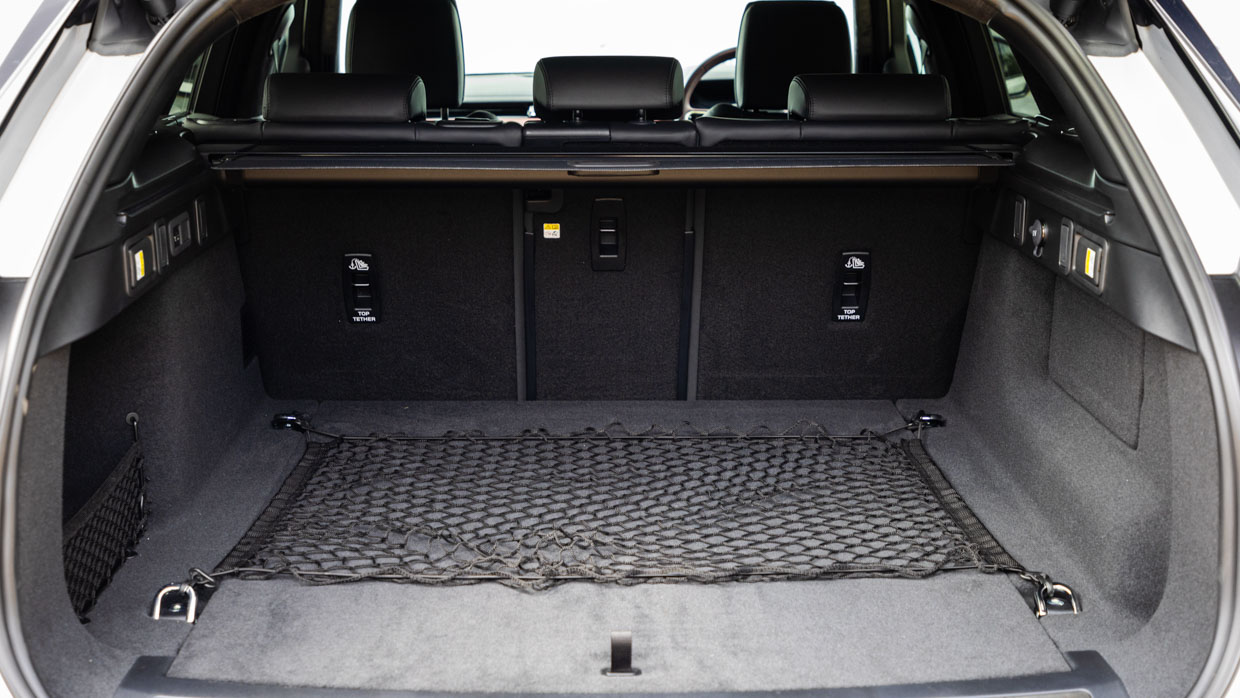
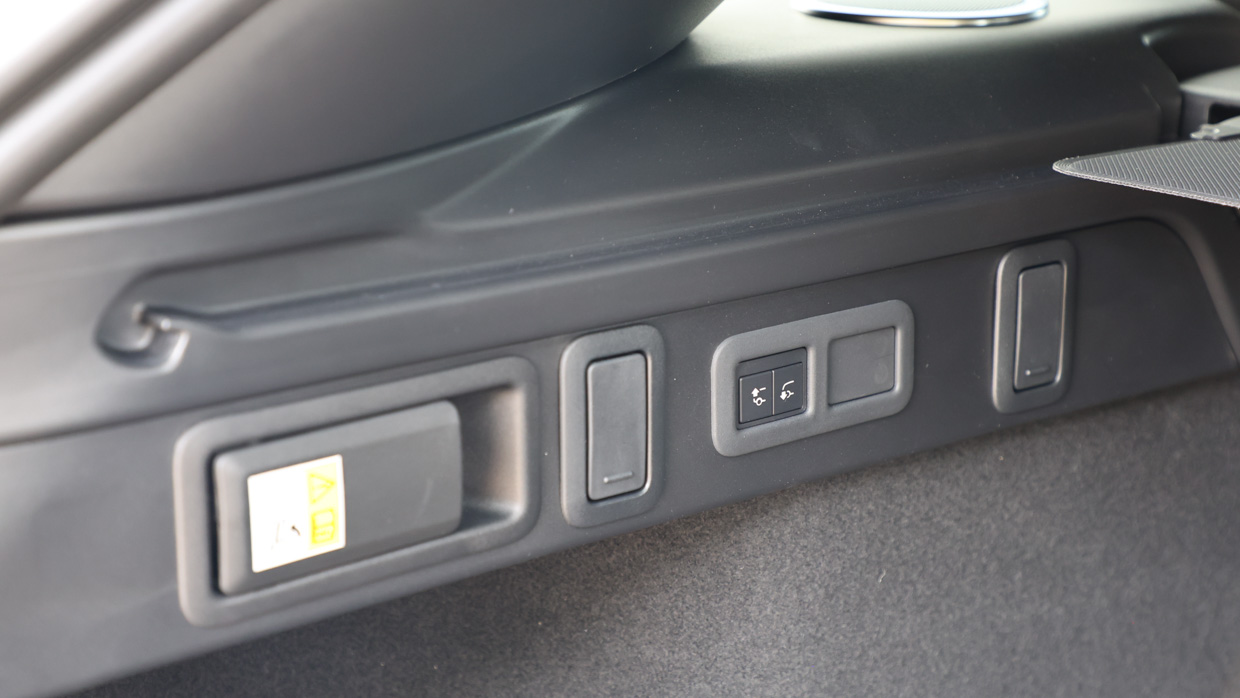
We had some minor refinement and build quality concerns about our test car. An odd, muted hissing sound could be heard from the footwell when using, and immediately after applying, the brakes.
The driver’s door started creaking loudly at the rubber near where it met the A-pillar as you opened and closed it. At one point a muted rattle was heard from the passenger B-pillar – all a bit disappointing given our test car was brand new.
The current-generation Velar was crash-tested by the Australasian New Car Assessment Program (ANCAP) in 2017 and scored five stars, although its rating expired in December 2023. The test has changed significantly since, and with its current safety offering, the Velar would very likely not score five stars in 2024.
That’s not to say it’s not a safe vehicle. The Velar comes with the following safety features as standard:
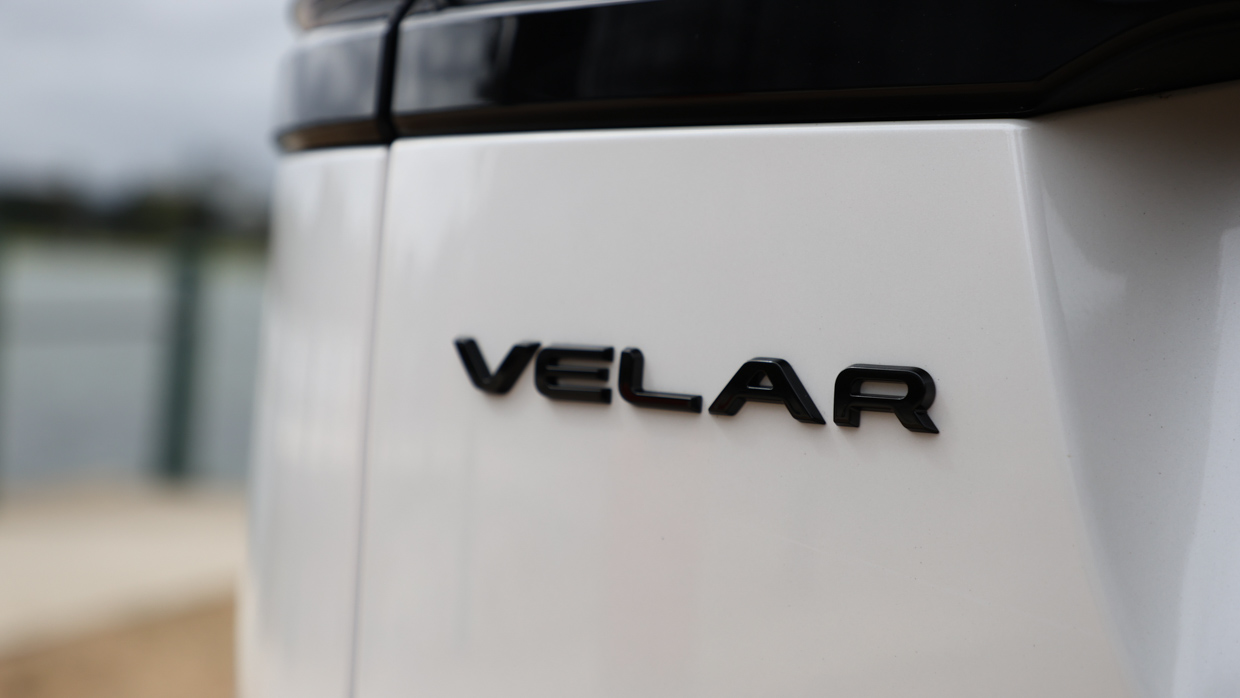
The Velar does not come with a front-centre airbag, a safety feature of the latest, safest vehicles. A front-centre airbag prevents the heads of front occupants making contact in a side impact.
A Jaguar Land Rover spokesperson told Chasing Cars “a centre airbag is not required in a vehicle of this size and interior space”. To be fair, there are newer large SUVs such as the Toyota Kluger which have snapped up a five-star rating in recent years without this sought-after addition.
The Velar also does not have reverse autonomous emergency braking, an important safety omission given this is standard equipment on many much cheaper new vehicles in 2024.
With its integrated starter generator and small lithium-ion battery pack under the boot floor, the Velar is a 48-volt “mild hybrid” and can scavenge energy under braking – but it is still a surprisingly thirsty vehicle.
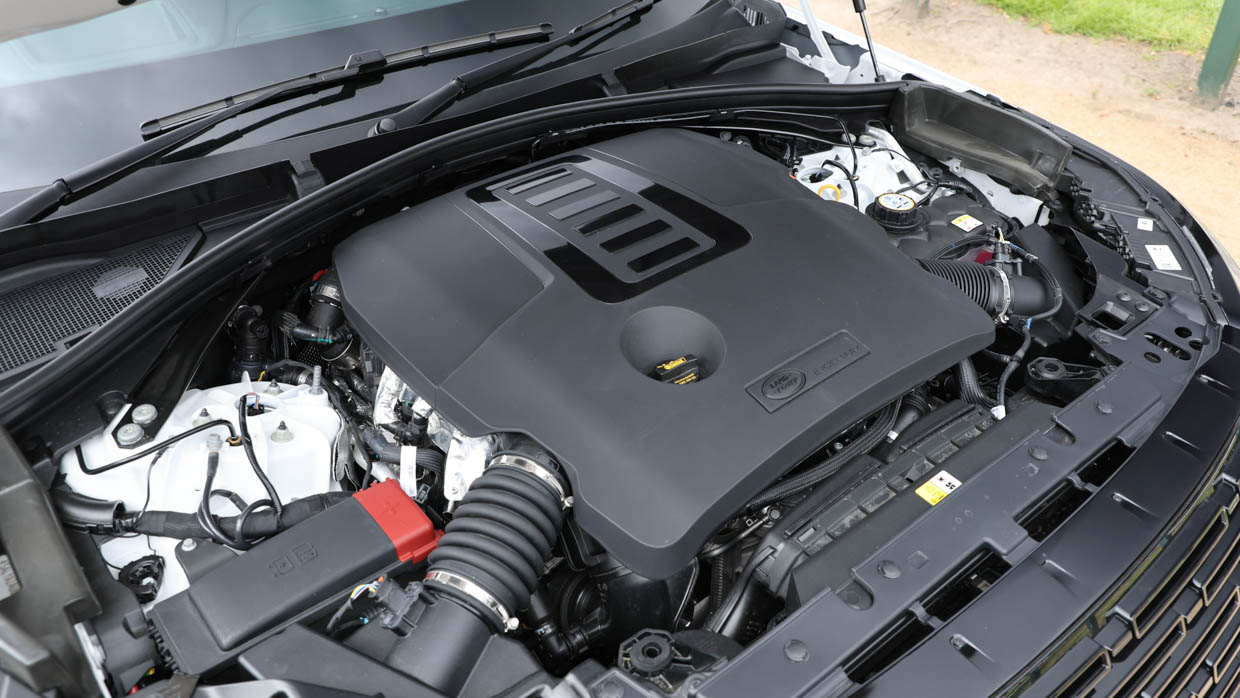
During our testing, we saw an average of 13.3L/100km across all conditions. Range Rover claims the Velar will use 9.1L/100km on the ADR81/02 cycle.
Five years of servicing (or 102,000km, whichever comes first) costs $2450 which is also pricey. All Range Rovers come with a five-year, unlimited kilometre warranty.
We loved driving the Velar Autobiography – even if it’s far from perfect. The fuel economy is too high and if this was our brand new car we’d be a bit disappointed with some of the build quality quirks that emerged during our week-long loan.
Some of its technology – including ADAS and safety – betray its 2017 origins, and hint that a second-generation Velar is not far away. An all-electric, new-generation Velar is expected in the next few years.
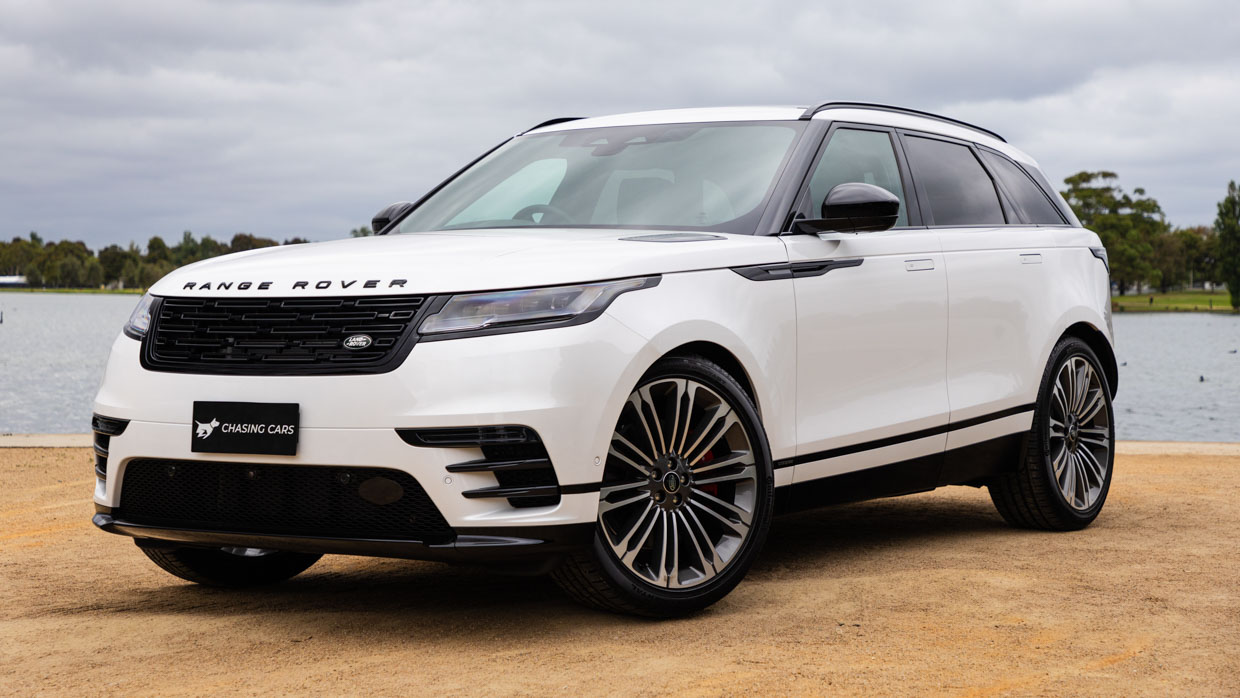
It’s also expensive compared to most other luxury mid-size SUVs. Not just that, but for the price of the Velar Autobiography, you can get an Audi Q7 55 TFSI S-Line – a larger vehicle, and a very nice one at that.
That all said, perhaps the biggest virtue of the Velar Autobiography is its lovely, almost hand-built charm that makes it feel special in a way something like the Audi Q7 is not. And cannot. It’s an SUV you might still think about years after you sold it – again in a way you might not a German one.
Key specs (as tested)
About Chasing cars
Chasing Cars reviews are 100% independent.
Because we are powered by Budget Direct Insurance, we don’t receive advertising or sales revenue from car manufacturers.
We’re truly independent – giving you Australia’s best car reviews.
The estimate provided does not take into account your personal circumstances but is intended to give a general indication of the cost of insurance, in order to obtain a complete quote, please visit www.budgetdirect.com.au. Estimate includes 15%^ online discount.
^Conditions Apply
Budget Direct Insurance arranged by Auto & General Services Pty Ltd ACN 003 617 909(AGS) AFSL 241 411, for and on behalf of the insurer, Auto & General Insurance Company Limited(ABN 42 111 586 353, AFSL 285 571).Because we don’t know your financial needs, we can’t advise you if this insurance will suit you. You should consider your needs and the Product Disclosure Statement before making a decision to buy insurance. Terms and conditions apply.
Indicative quote based on assumptions including postcode , 40 year old male with no offences, licence suspensions or claims in the last 5 years, a NCD Rating 1 and no younger drivers listed. White car, driven up to 10,000kms a year, unfinanced, with no modifications, factory options and/or non-standard accessories, private use only and garaged at night.
^Online Discounts Terms & Conditions
1. Discounts apply to the premium paid for a new Budget Direct Gold Comprehensive Car Insurance, Third Party Property Only or Third Party Property, Fire & Theft Insurance policy initiated online on or after 29 March 2017. Discounts do not apply to optional Roadside Assistance.
2. Discounts do not apply to any renewal offer of insurance.
3. Discounts only apply to the insurance portion of the premium. Discounts are applied before government charges, taxes, levies and fees, including instalment processing fees (as applicable). The full extent of discounts may therefore be impacted.
4. We reserve the right to change the offer without notice.